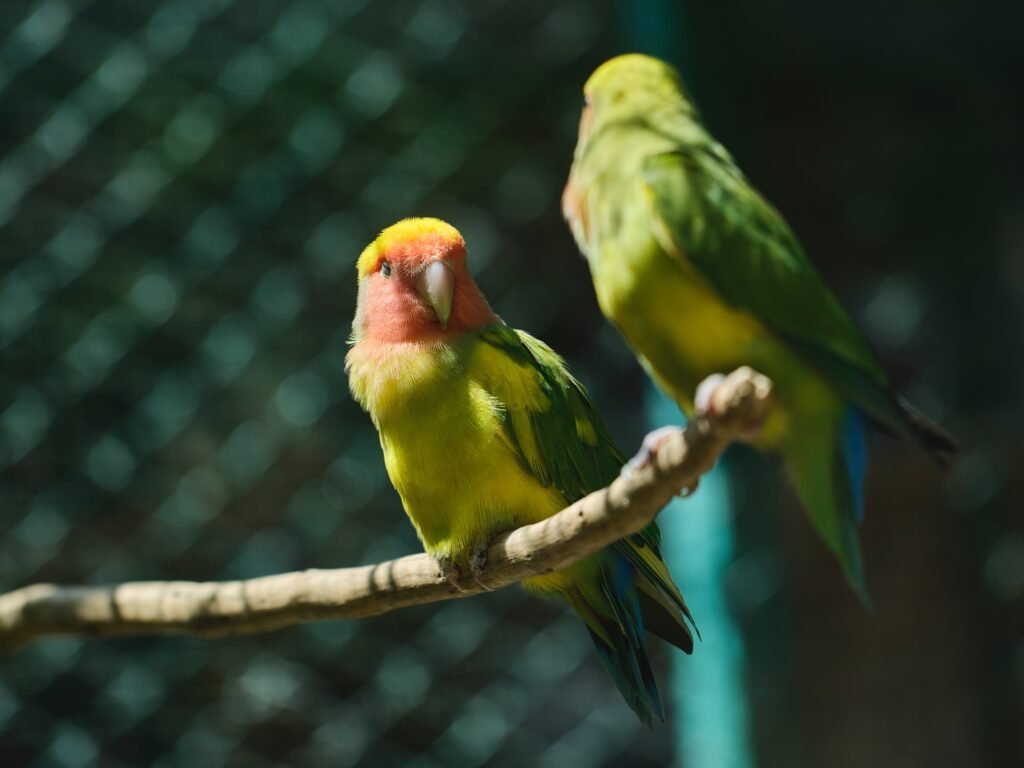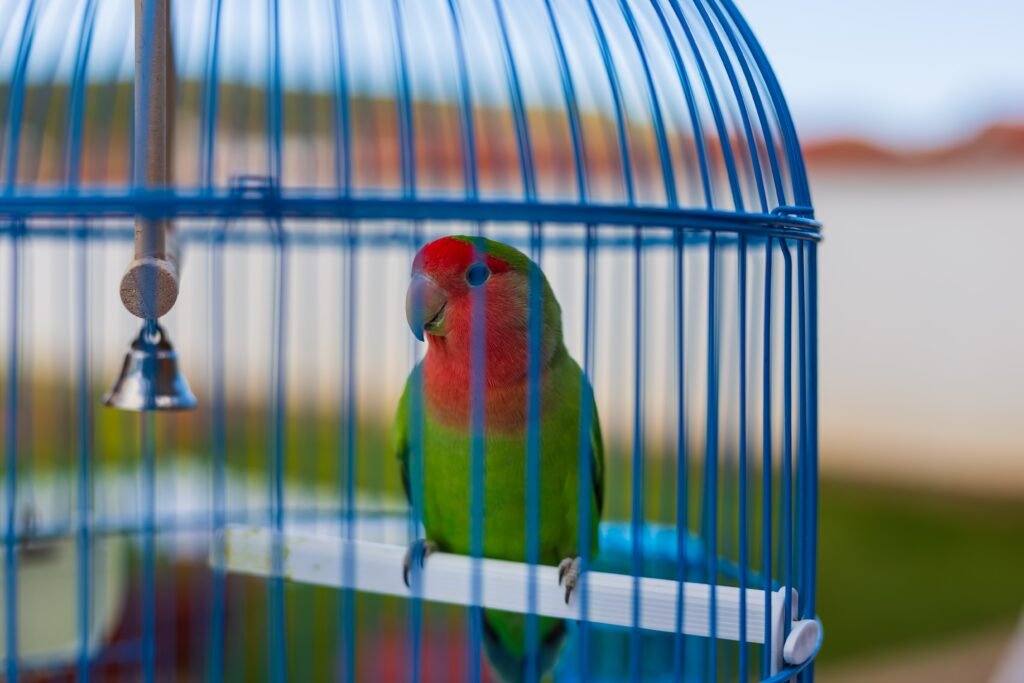Lovebirds, the charming little parrots known for their vibrant colours and affectionate nature, also possess a remarkable gift for singing. Their melodic tunes, often compared to the sound of a flute or a miniature orchestra, captivate the hearts of bird enthusiasts worldwide. This article will explore the enchanting world of lovebird singing, understand its significance, and offer valuable insights into nurturing and appreciating this unique musical talent.
Understanding Lovebird Singing
Lovebirds are renowned for their vocal abilities, and their songs are a delightful blend of various chirps, whistles, and trills. These captivating sounds are a means of communication and a way for lovebirds to express their emotions and establish social bonds within their flock.
The Purpose of Lovebird Singing
Lovebird songs serve multiple purposes, including:
- Courtship: Male lovebirds often serenade their potential mates with intricate songs to attract their attention and display their desire as partners. These courtship songs allow lovebirds to communicate affection and establish a strong bond with their chosen mate.
- Territory Marking: Singing is a way for lovebirds to establish and defend their territory. By vocalizing their presence, they communicate to other birds that the area is occupied and should be respected. This territorial singing also acts as a warning to potential intruders, ensuring the safety of their flock.
- Social Interaction: Lovebirds use their songs to communicate with their flock members, expressing their well-being and maintaining social cohesion. These vocalizations help strengthen the social bonds within the flock and establish a sense of unity and belonging.
Nurturing Lovebird Singing
If you’re fortunate enough to have lovebirds as companions, you can play a significant role in nurturing and encouraging their singing abilities. Here are some tips to help you foster their musical talents:
Provide a Stimulating Environment
Creating an engaging and stimulating environment is crucial for lovebirds to express their singing skills. Consider the following:
- Cage Placement: Place the cage where your lovebirds can observe their surroundings and enjoy natural light. This exposure to their environment can inspire them to sing. Additionally, ensure the cage is spacious enough for them to move around comfortably.
- Toys and Perches: Install a variety of toys, perches, and swings inside the cage. These accessories provide mental and physical stimulation, encouraging your lovebirds to stay active and vocalize more frequently. Choose toys that make different sounds or have bells attached, enhancing their interest in singing.
- Natural Elements: Incorporate natural elements into their environment, such as branches or twigs from non-toxic trees. These elements provide a sense of authenticity and offer opportunities for exploration and play. Lovebirds may find joy in chewing on the branches or hopping from one perch to another, which can stimulate their vocalization.
Play Soothing Music
Playing soft and calming music in the background can inspire lovebirds to sing along. Classical tunes, especially those with musical instrumental compositions, can positively impact their vocalization. Experiment with different genres and observe how your lovebirds respond to each type of music. Some may prefer classical, while others may enjoy jazz or even nature sounds like flowing water or bird calls.
Spend Quality Time
Interacting with your lovebirds regularly is essential for fostering their singing abilities. Dedicate time each day to bonding with them, talking to them gently, and creating a strong emotional connection. This positive reinforcement will encourage their instincts to vocalize and sing. You can also engage in activities like training sessions or teaching them simple tunes, which can further develop their singing skills.
Recognizing and Appreciating Lovebird Songs
Each lovebird has its unique singing style and repertoire of songs. You can better understand and appreciate their musical talents by familiarising yourself with their vocalizations. Here’s how you can recognize and appreciate lovebird songs:
Identifying Different Tunes
Lovebirds produce a wide range of sounds and calls. Some common tunes include:
- Whistling: Lovebirds often emit distinct whistles, using different pitches and rhythms. These whistles can vary in length and complexity, showcasing the lovebird’s ability to mimic and create unique melodies.
- Chirping: They produce cheerful and rhythmic chirps, sometimes resembling a repetitive pattern. These chirps can be short and quick or long and melodic, adding a lively ambience to their singing.
- Trilling: Lovebirds can trill, creating a rapid succession of notes that can be quite impressive. This trilling can be soft, gentle, or loud and intense, displaying the lovebird’s vocal range and agility.
Responding to their Songs
When your lovebirds sing, respond to them positively. Applaud their efforts, mimic their tunes, and engage in gentle conversation. This interaction reinforces their singing behaviour and strengthens their bond with their feathered friends. Encourage other household members to appreciate and acknowledge their singing, creating a supportive and encouraging environment.
Capturing their Performances
Record your lovebirds’ performances to savour their talent even when they are not actively singing. These recordings can also be shared with other avian enthusiasts or used for training. Listening to their songs again can bring joy and nostalgia, allowing you to relive the beautiful moments shared with your lovebirds.
Conclusion
Lovebird singing is a mesmerizing phenomenon that adds an enchanting touch to your avian companion’s persona. By understanding the significance of their songs and providing a nurturing environment, you can revel in the musical talents of these delightful feathered friends. So, sit back, listen, and let the captivating melodies of Lovebird singing fill your home with joy.
Lovebirds Singing: FAQ
1. What is the purpose of lovebird singing?
Lovebird songs serve multiple purposes, including courtship, territory marking, and social interaction within their flock. Male lovebirds serenade potential mates to attract attention and establish a strong bond. Singing also helps lovebirds establish and defend their territory and communicate with their flock members to strengthen social bonds.
2. How can I nurture lovebird singing?
To nurture lovebird singing:
- Provide a stimulating environment by placing the cage in a location with natural light and enough space for movement.
- Install toys, perches, and swings for mental and physical stimulation.
- Incorporate natural elements like branches from non-toxic trees.
- Play soothing music, such as classical tunes, in the background to inspire singing.
- Spend quality time bonding with your lovebirds and engage in activities like training sessions or teaching them simple tunes.
3. How can I recognize different lovebird tunes?
Lovebirds produce a wide range of sounds and calls. Common tunes include whistling, chirping, and trilling. Whistling can vary in pitches and rhythms, while chirping adds a lively ambience to their singing. Trilling showcases their vocal range and agility. By familiarizing yourself with these tunes, you can better understand and appreciate their musical talents.
4. How can I respond to my lovebird’s songs?
When your lovebirds sing, respond positively by applauding their efforts, mimicking their tunes, and engaging in gentle conversation. This interaction reinforces their singing behaviour and strengthens the bond between you and your lovebirds. Encourage other household members to appreciate and acknowledge their singing, creating a supportive and encouraging environment.


